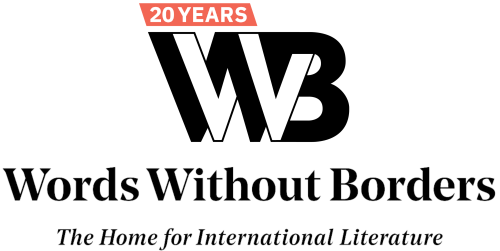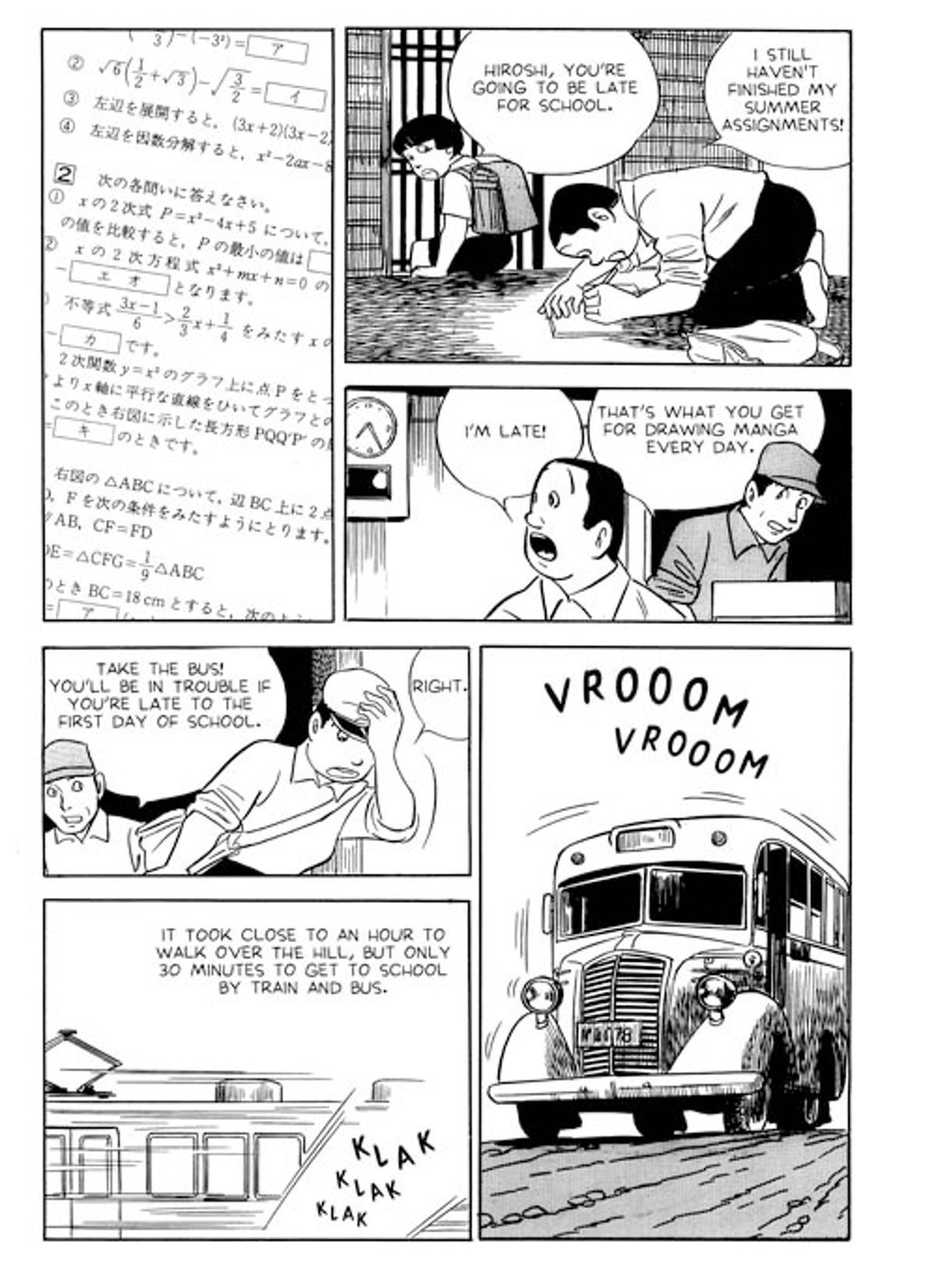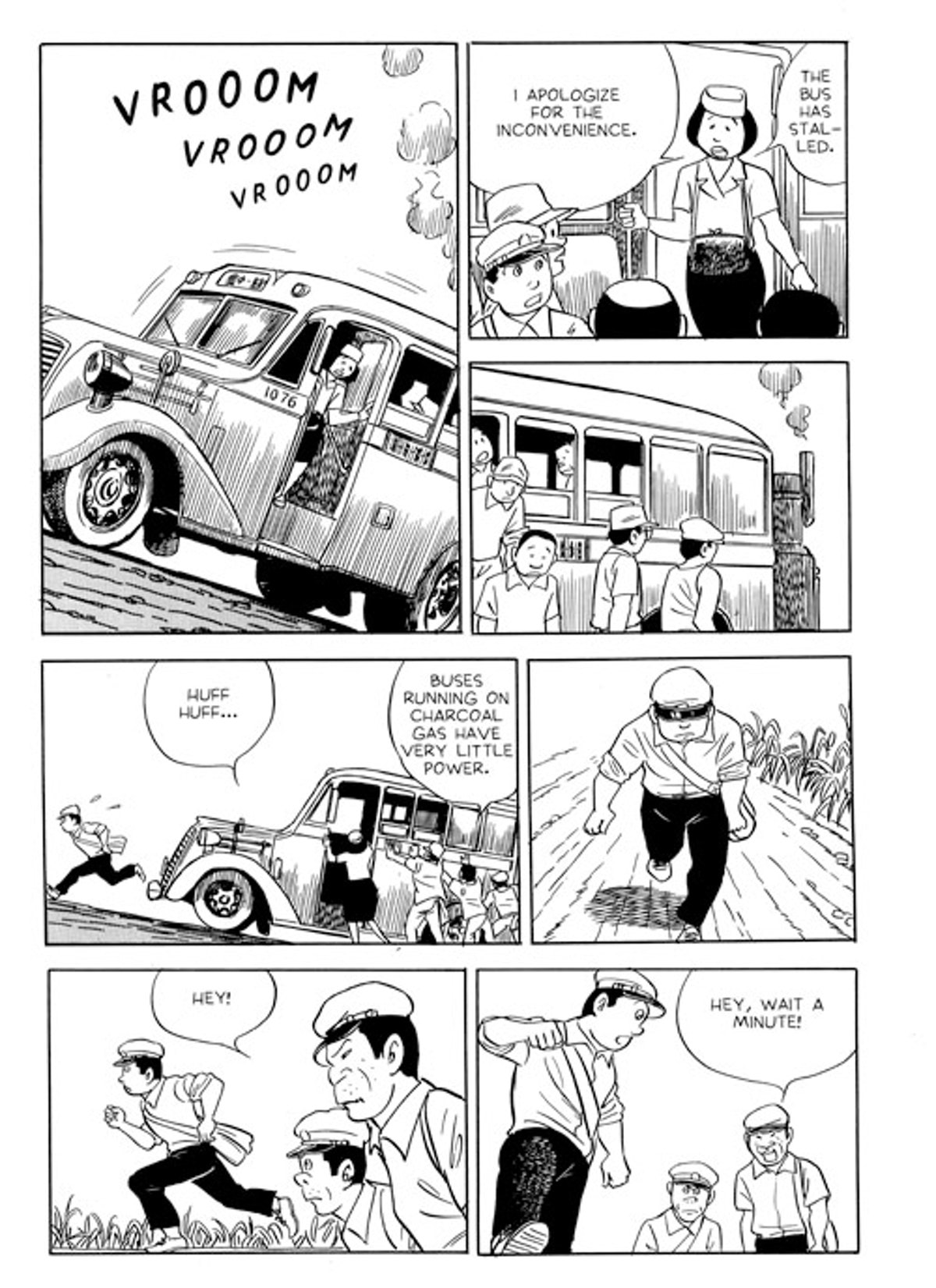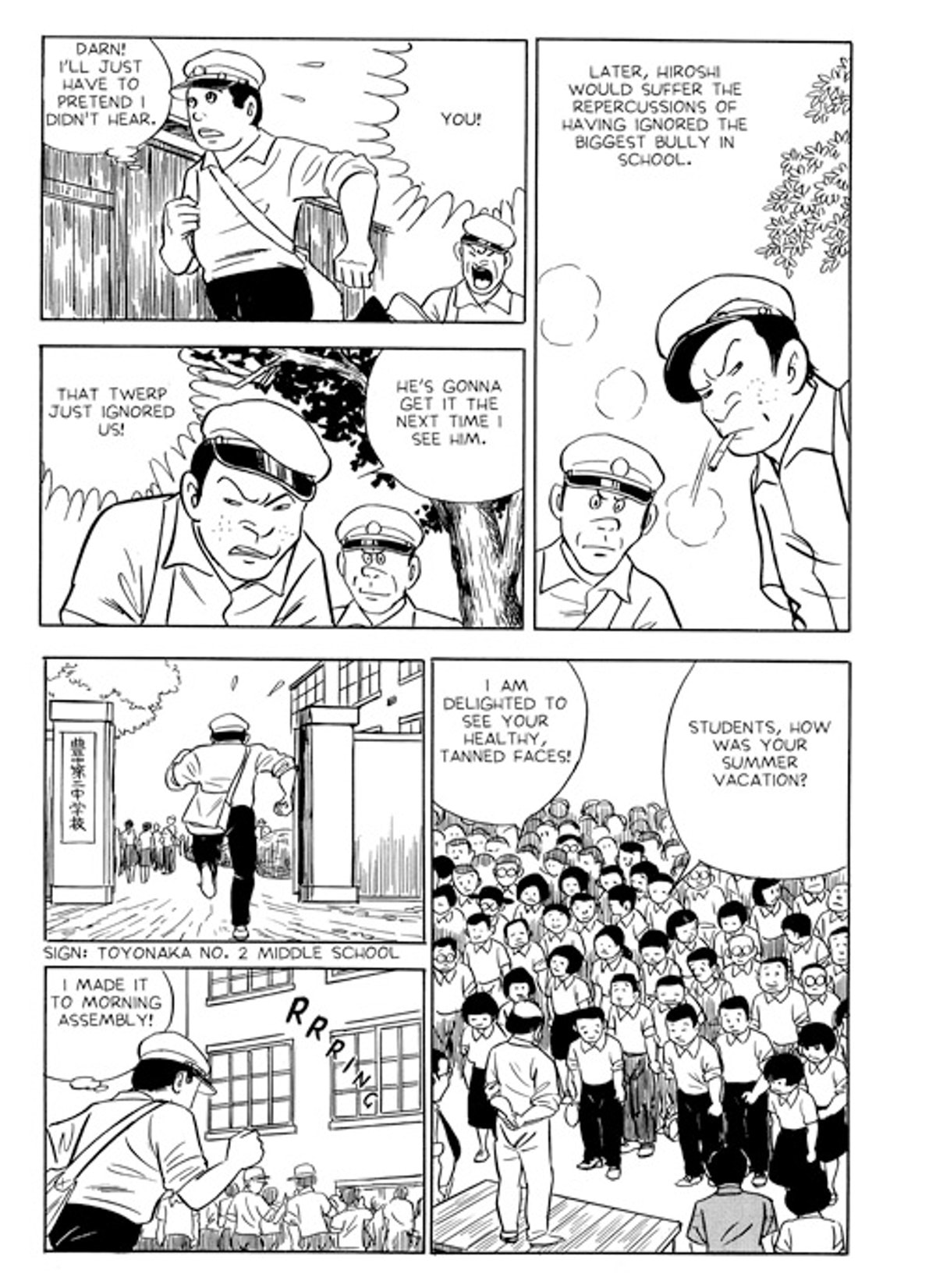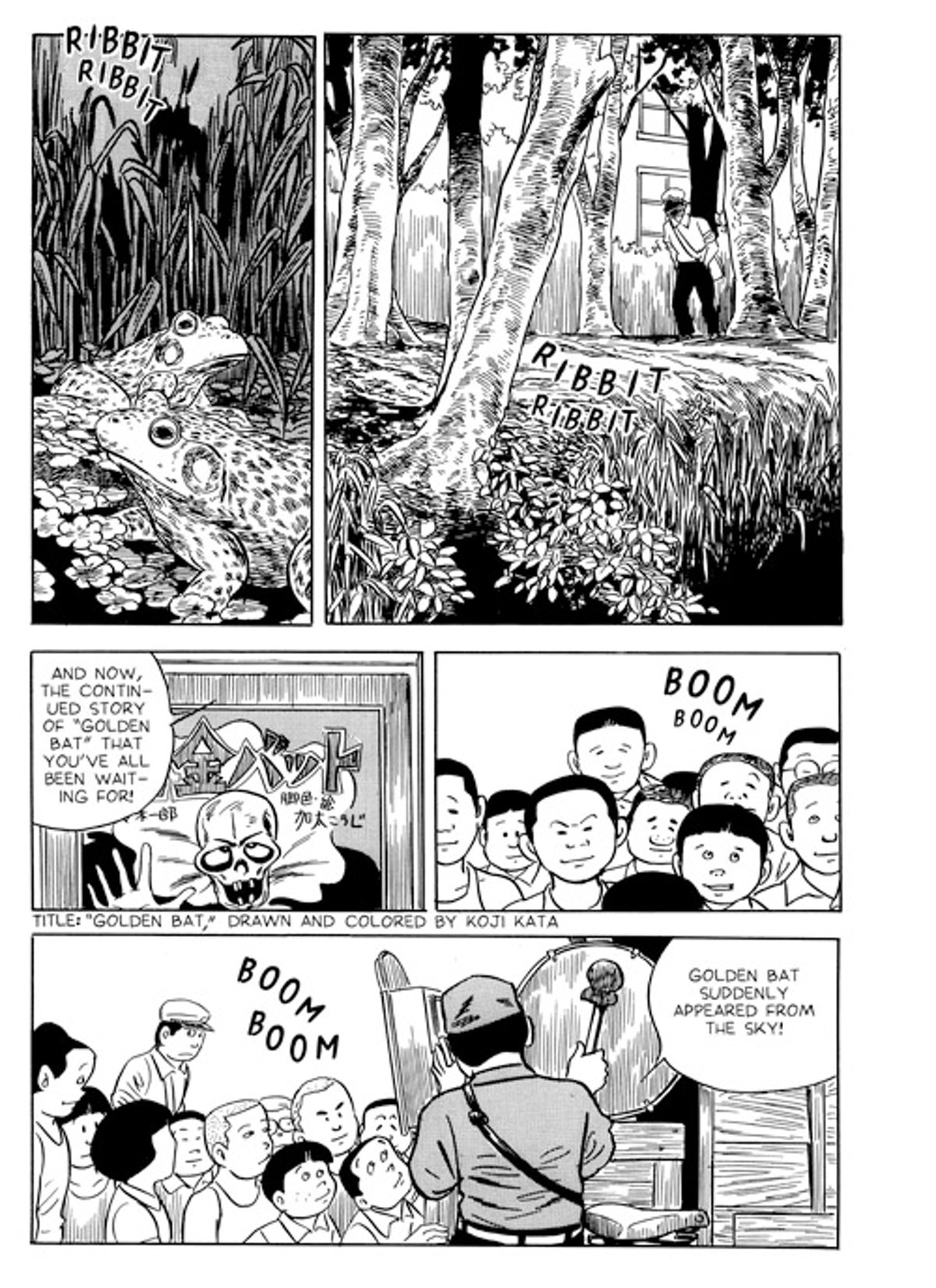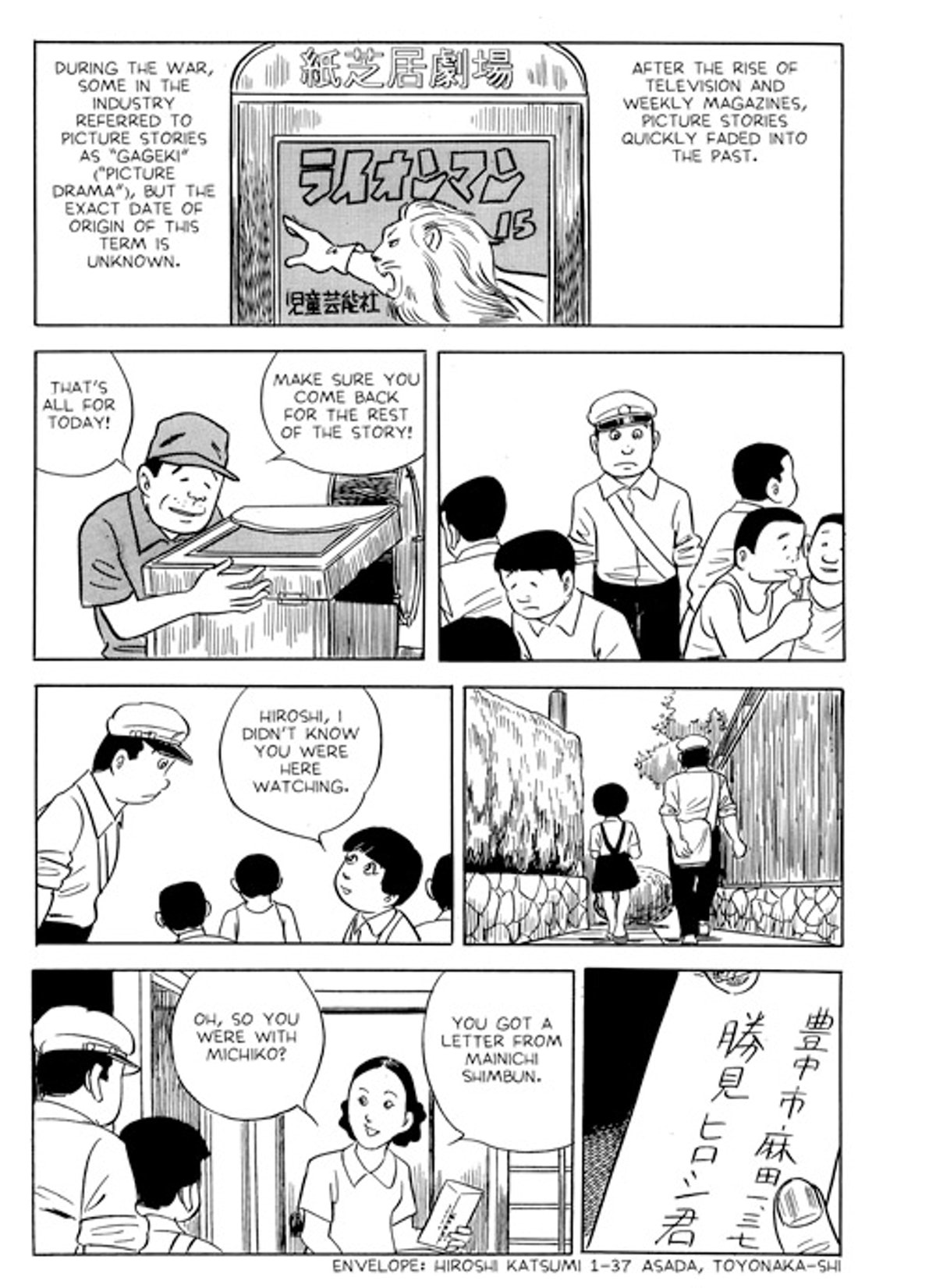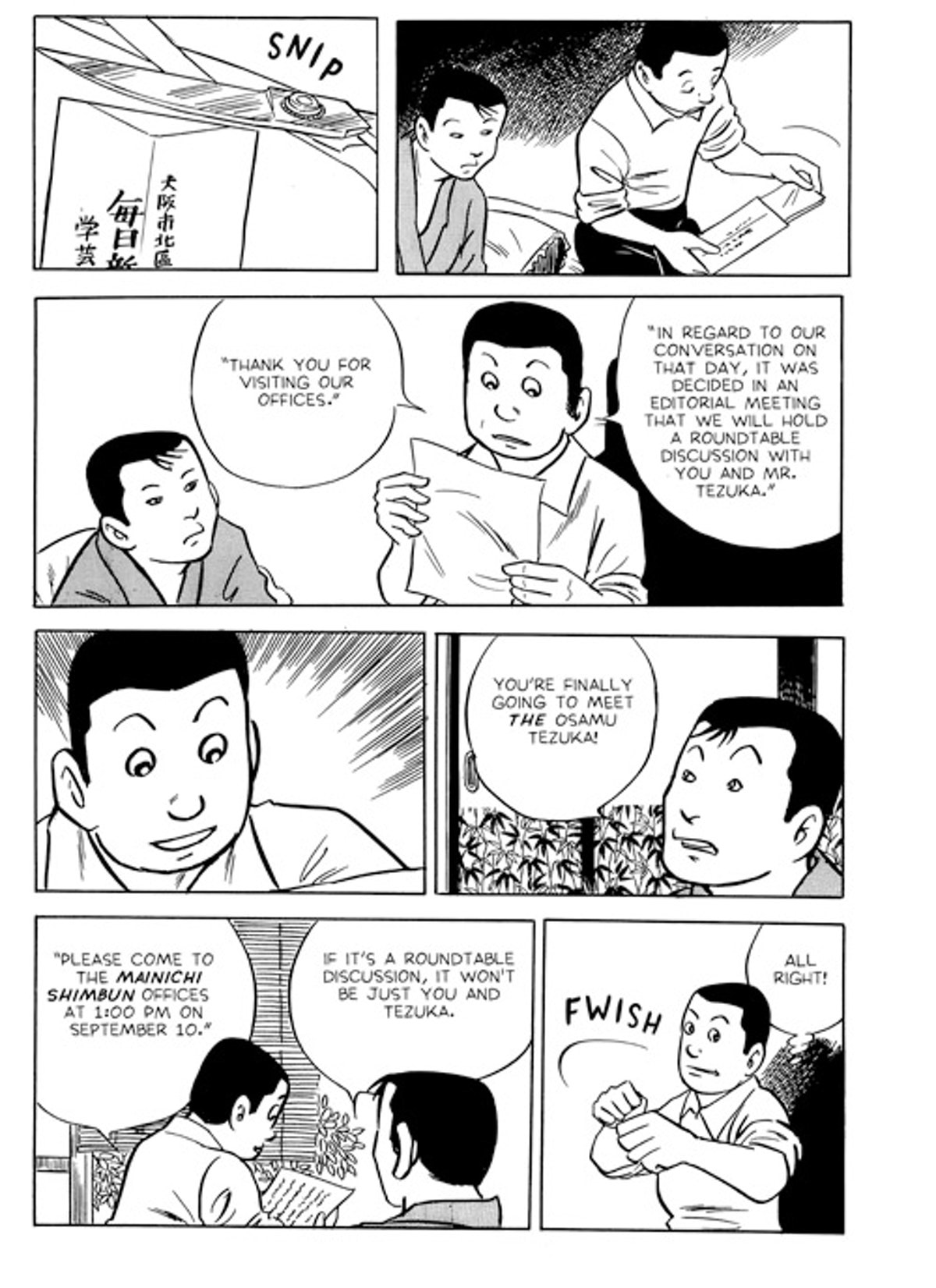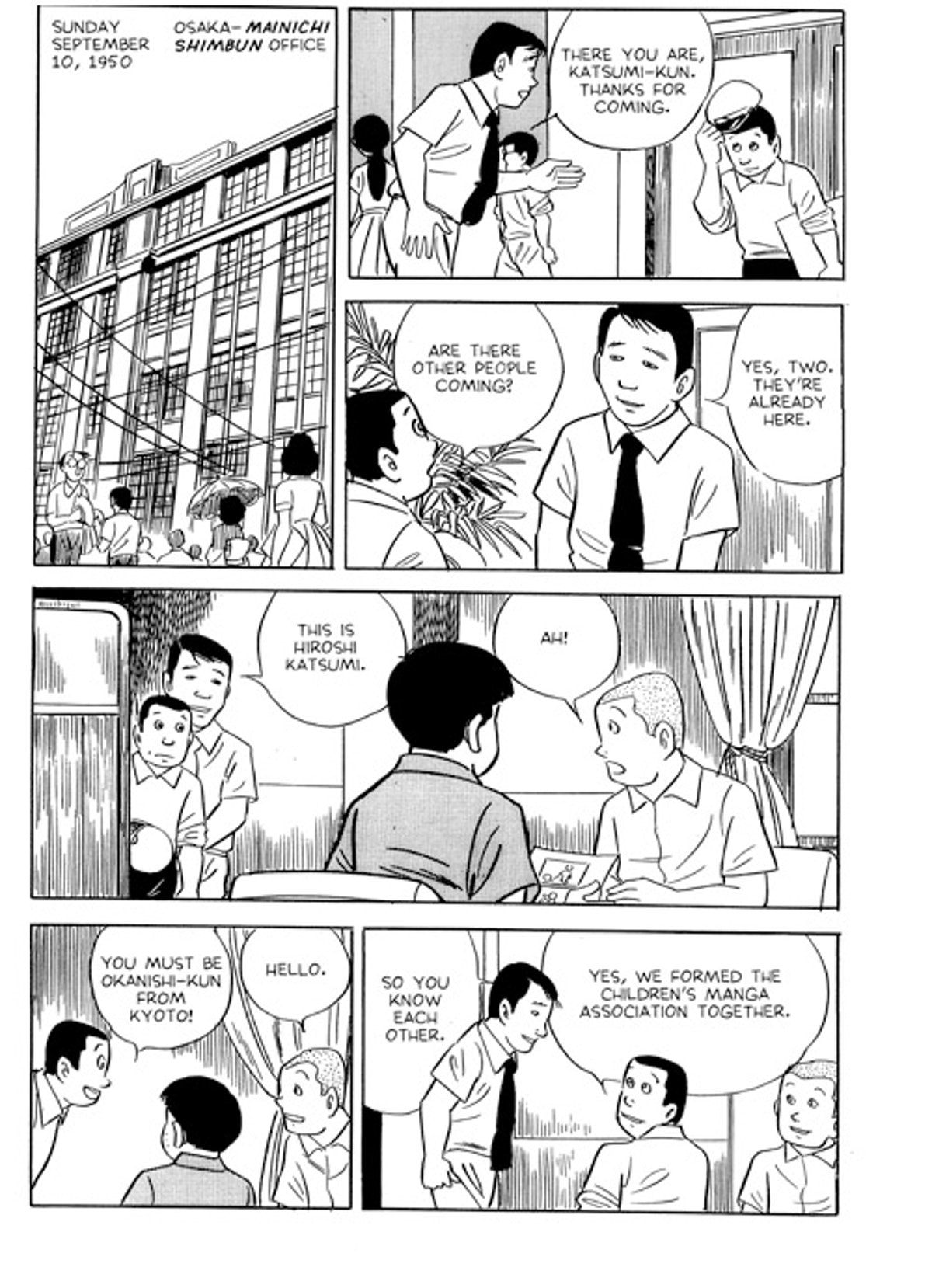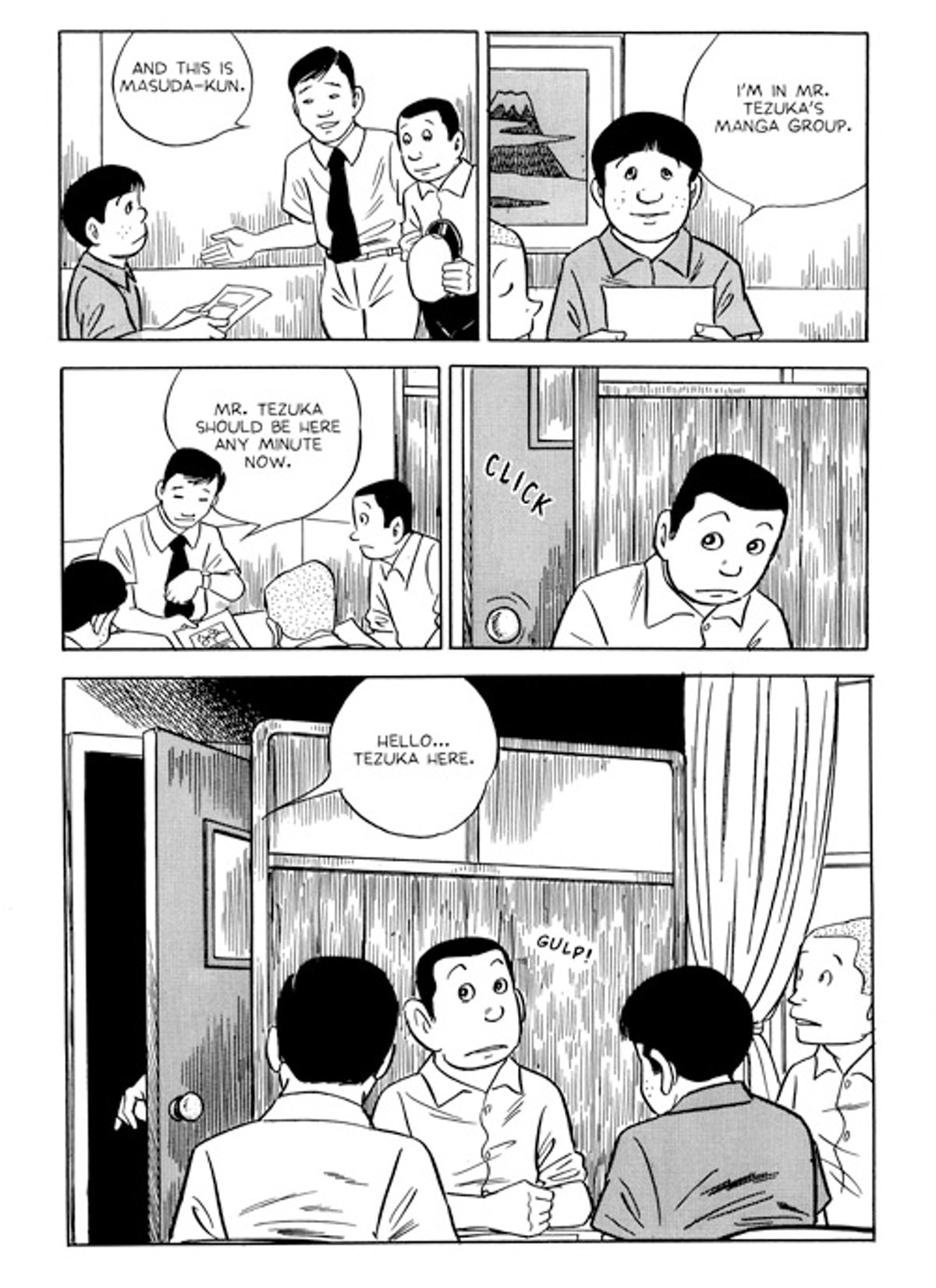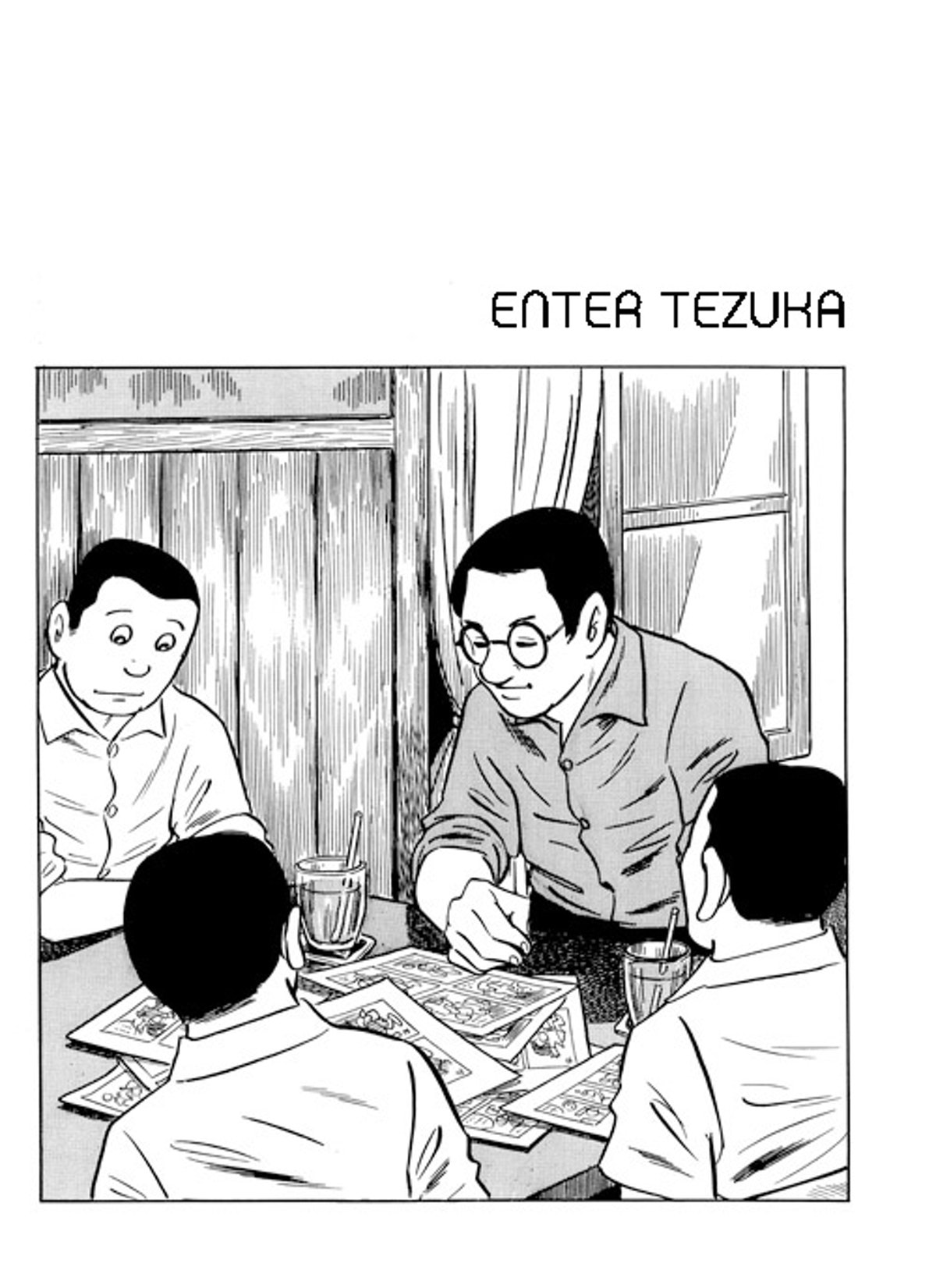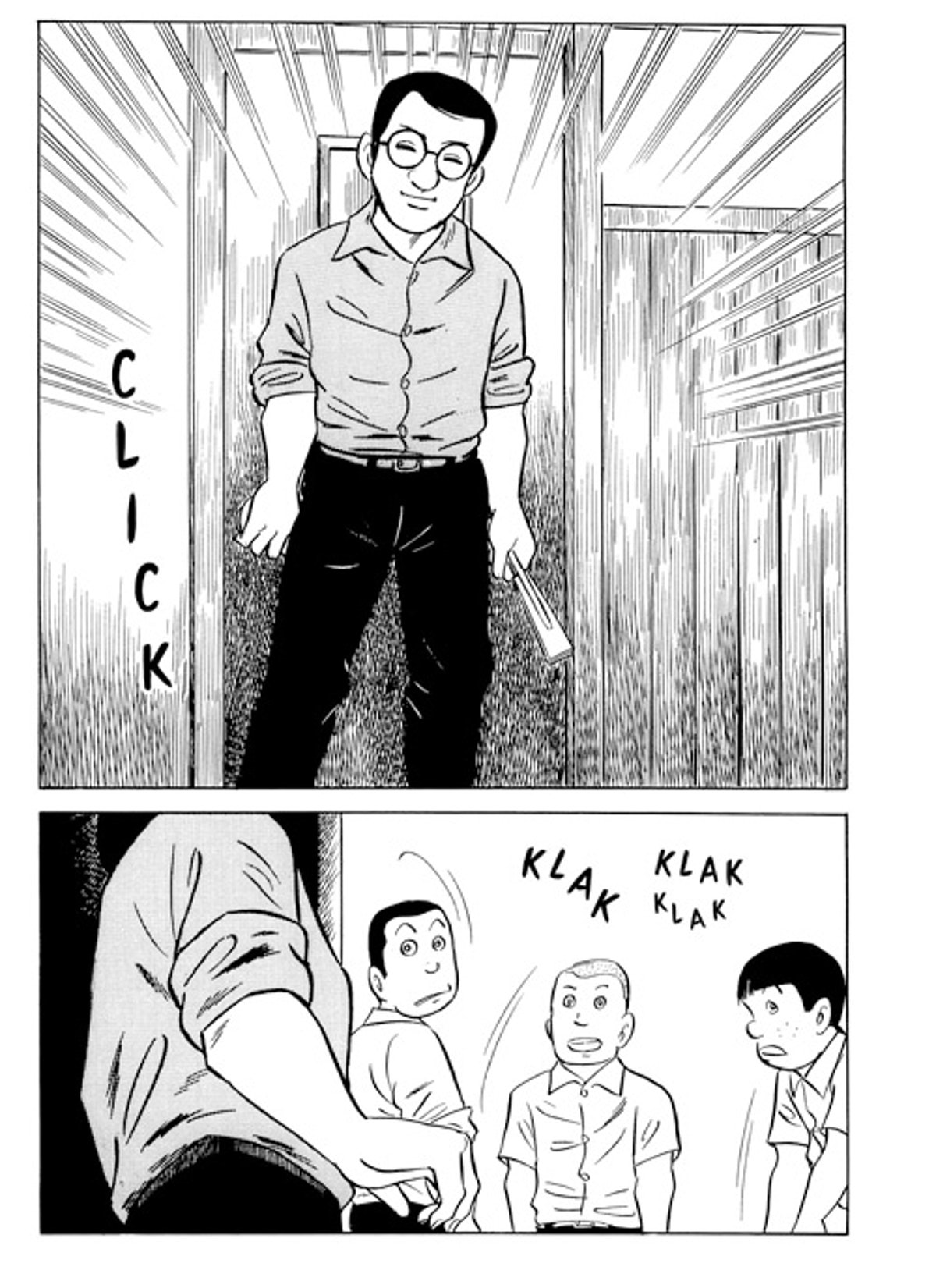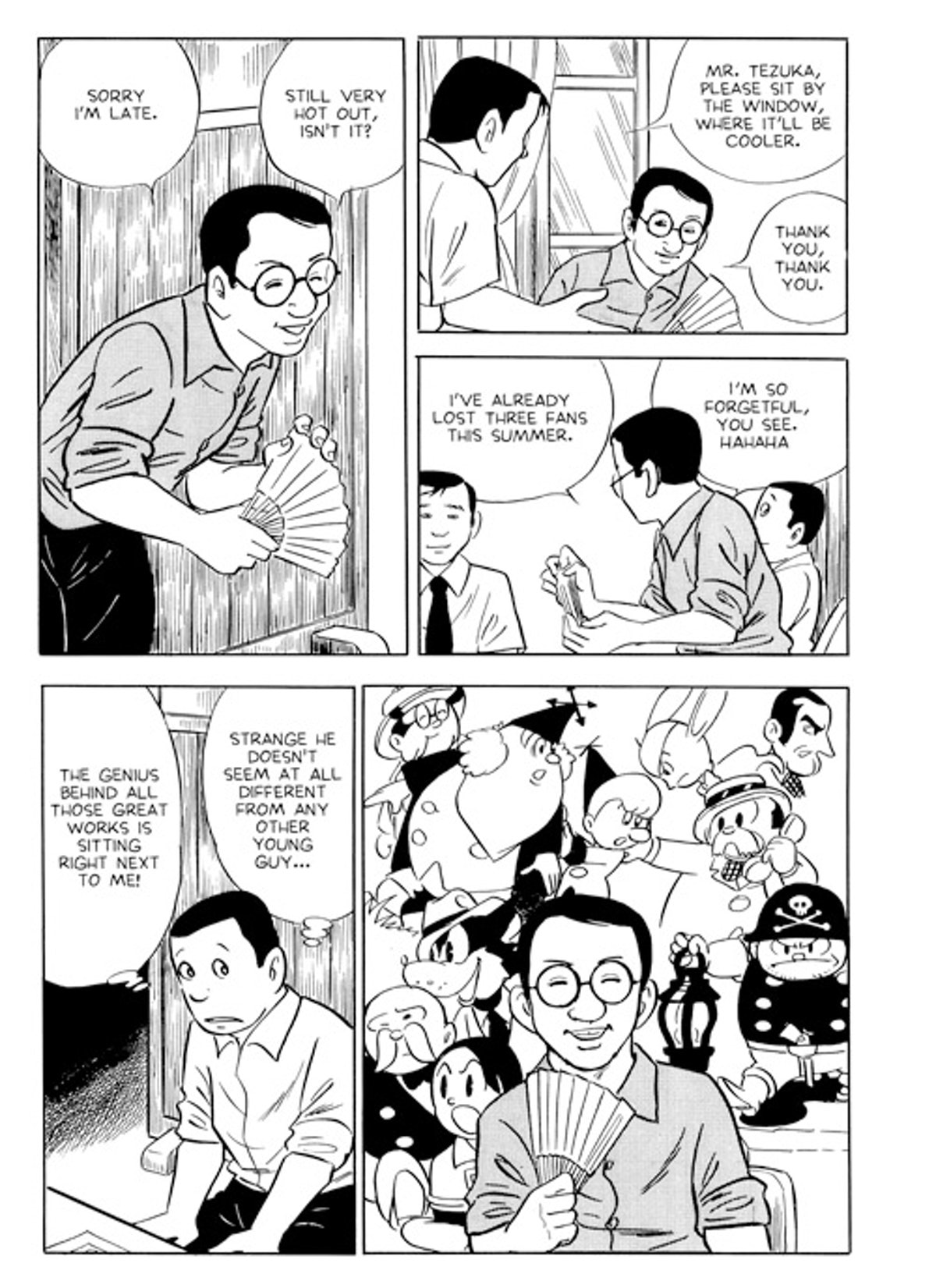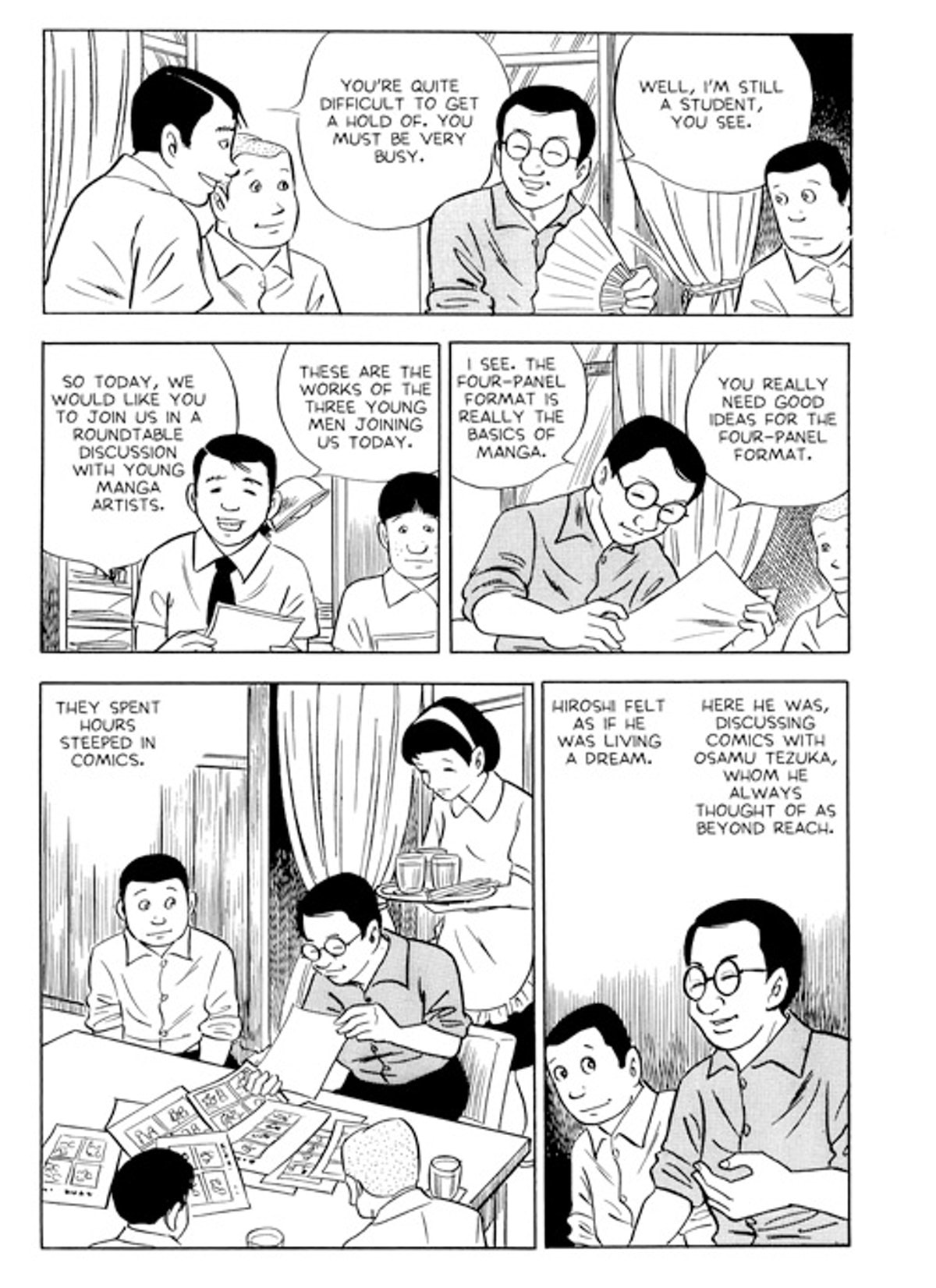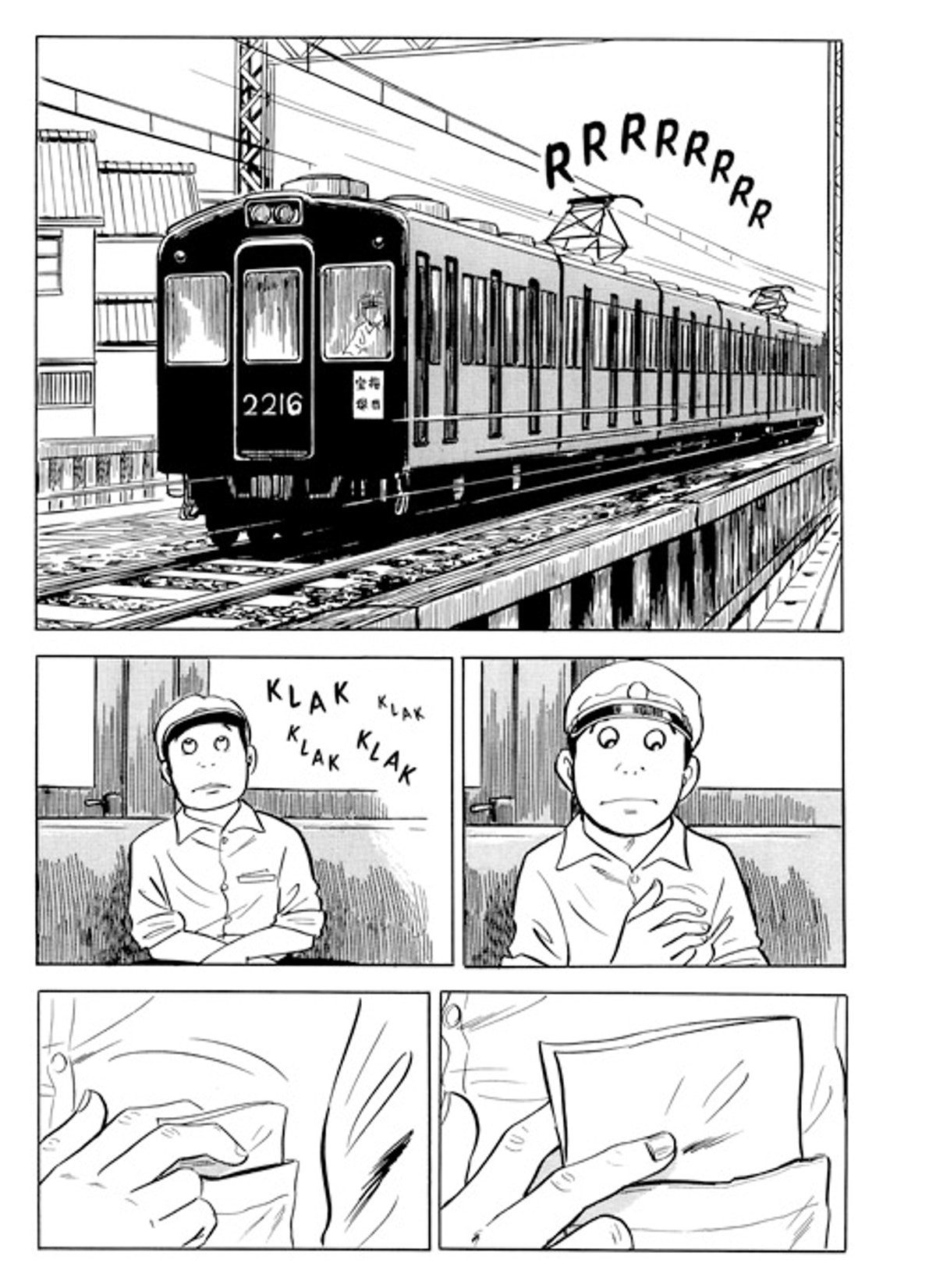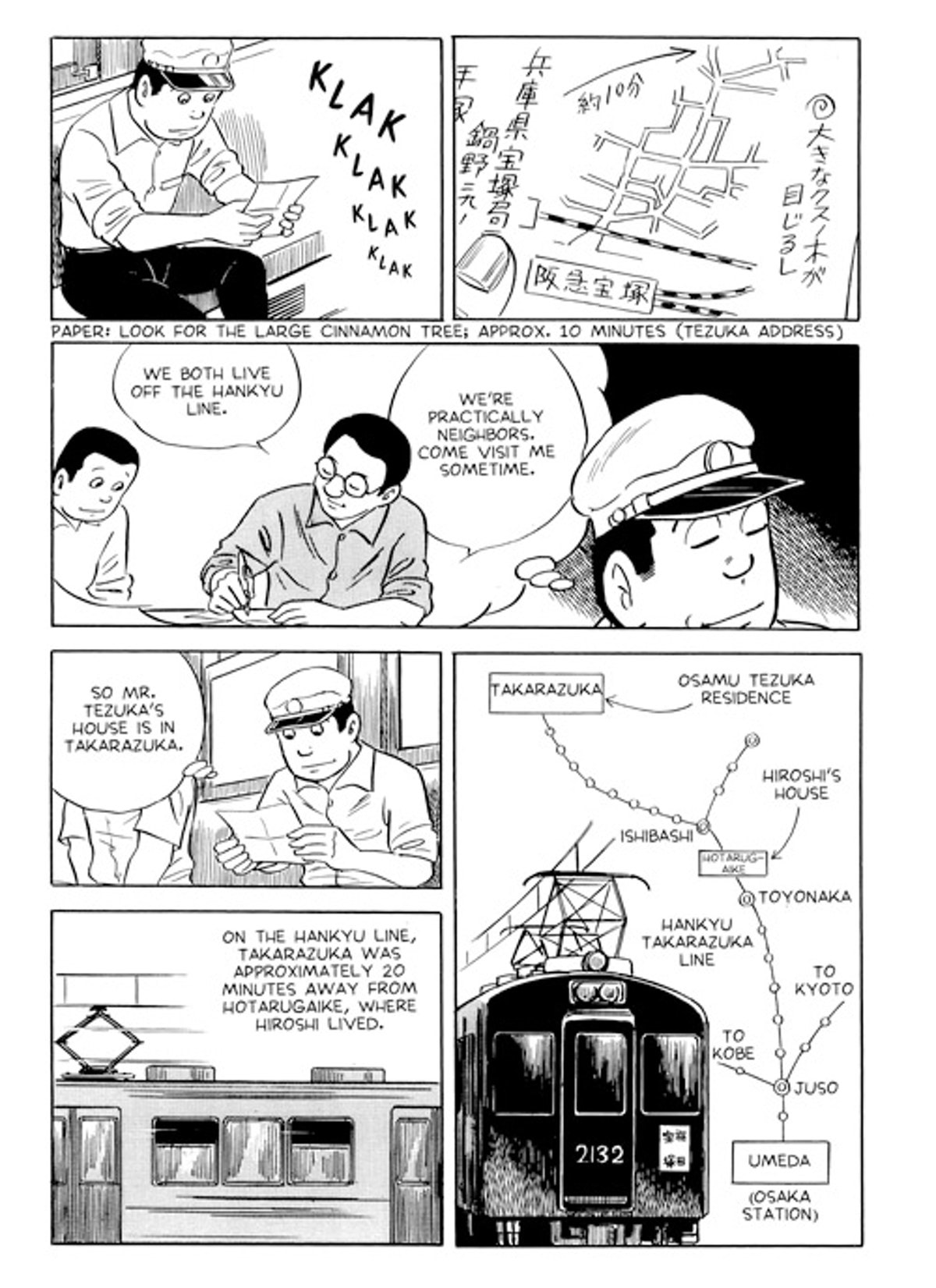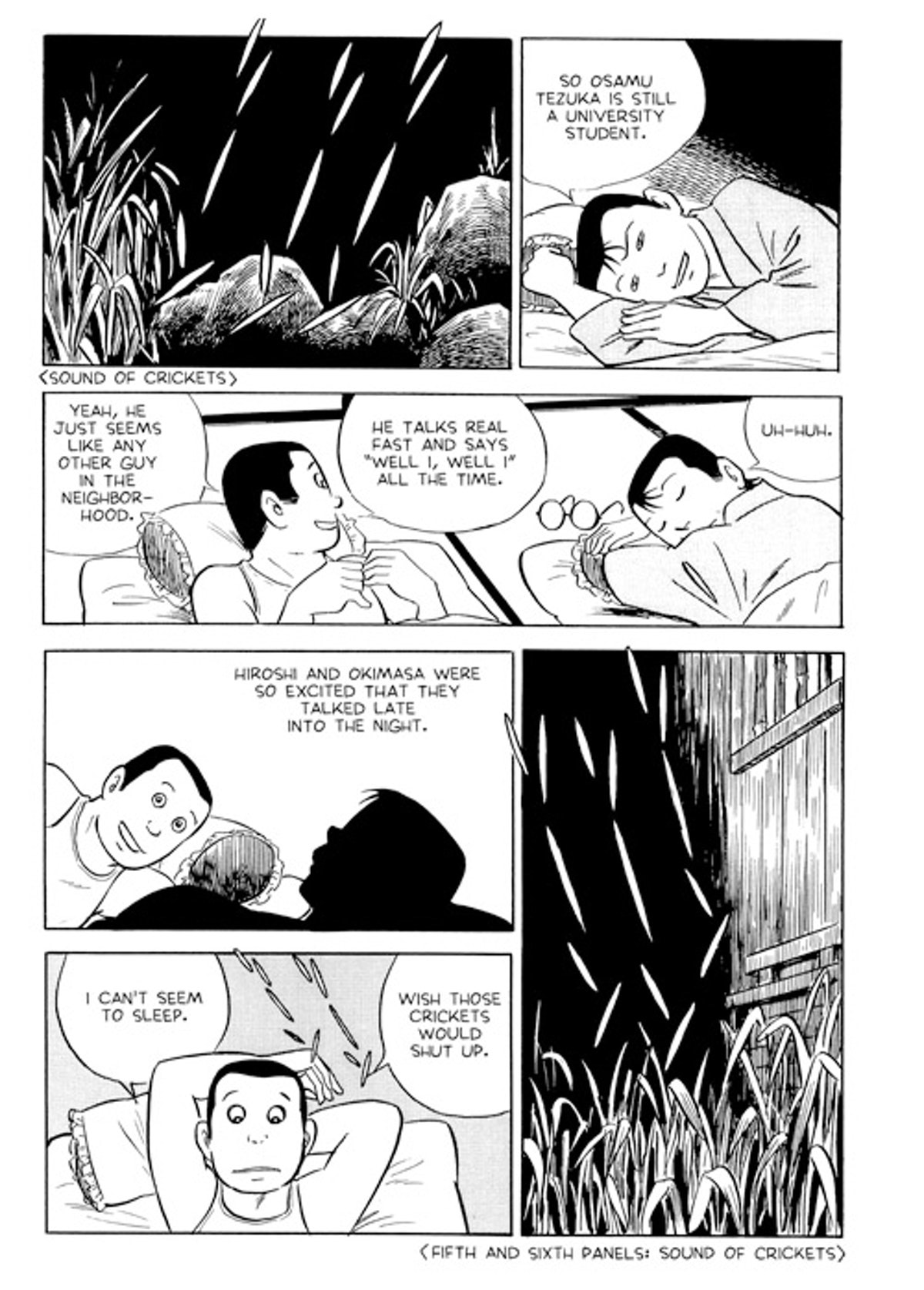Michiko: Hiroshi, you’re going to be late for school.
Hiroshi: I still haven’t finished my summer assignments!
Hiroshi: I’m late!
Person: That’s what you get for drawing manga every day.
Person: Take the bus! You’ll be in trouble if you’re late to the first day of school.
Hiroshi: Right.
[It took close to an hour to walk over the hill, but only 30 minutes to get to school by train and bus.]
{Klak Klak Klak}
{Vrooom Vroom}
{Vrooom Vrooom Vrooom}
Driver: I apologize for the inconvenience. The bus has stalled.
Bus: Huff huff…
Person: Buses running on charcoal gas have very little power.
Bully: Hey!
Bully: Hey, wait a minute!
6 panels organized in 2 columns, 4 panels in the left column and 2 in the right column.
Panel 1
(On a street outside, Hiroshi hurriedly runs past a adolescent male yelling in the background)
Hiroshi (to himself): Darn! I’ll just have to pretend I don’t hear.
Bully: You!
Panel 2
(Two adolescent male bullies appear in the frame, one is hunched over in anger, brows deeply furrowed with a hat titled to the side)
Bully: That twerp just ignored us!
He's gonna get it the next time I see him.
Panel 3
(The two bullies angrily glare at the direction Hiroshi ran in - the one that just threatened him puffing on a cigarette with distain)
[Narration: Later, Hiroshi would suffer the repercussions of having ignored the biggest bully in school.]
Panel 4
(Hiroshi is seen from the back frantically running straight into the open gate to the wall surrounding the school)
[Sign: Toyonaka No. 2 Middle School]
Panel 5
Hiroshi(to himself): I made it to morning assembly!
{Rrring}
Panel 6
(The principal stands on the stage addressing the crowd of middle school children gathered in front of him with varying degrees of boredom expressions)
Principal: I am delighted to see your healthy, tanned faces! Students, how was your summer vacation?
{Ribbit Ribbit}
{Ribbit ribbit}
Storyteller: And now, the continued story of “Golden Bat” that you’ve all been waiting for!
{Boom boom}
Title: “Golden Bat,” drawn and colored by Koji Kata
{Boom boom}
Storyteller: Golden Bat suddenly appeared from the sky!
[Picture story shows were at the height of their popularity in 1949. There were 50,000 picture storytellers on the streets of Japan. They would sell kids candy and crackers, then perform two or three episodes.]
[“Golden Bat” was the most popular story. However, because there was only one original set that was loaned out to the storytellers, bootleg versions flooded the streets. Many of the greats of postwar manga, including Shigeru Mizuki, Goseki Kojima, Sanpei Shirato, and Gojin Ishihara, were all picture storytellers during this period.]
[During the war, some in the industry referred to the picture stories as “Gageki” (“Picture Drama”), but the exact date of origin of this term in unknown. After the rise of television and weekly magazines, picture stories quickly faded into the past.]
Storyteller: That’s all for today! Make sure you come back for the rest of the story!
Michiko: Hiroshi, I didn’t know you were here watching.
Mother: Oh, so you were with Michiko? You got a letter from Mainichi Shimbun.
Envelope: Hiroshi Katsumi 1-37 Asada, Toyonaka-shi
{Snip}
Hiroshi: “Thank you for visiting our offices. In regard to our conversation on that day, it was decided in an editorial meeting that we will hold a roundtable discussion with you and Mr. Tezuka.”
Person: You’re finally going to meet the Osamu Tezuka!
Hiroshi: “Please come to the Mainichi Shimbun offices at 1:00 PM on September 10.”
Person: If it’s a roundtable discussion, it won’t be just you and Tezuka.
{Fwish}
Hiroshi: (Thinking) All right!
[Sunday September 10, 1950 Osaka-Mainichi Shimbun Office]
Organizer: There you are, Katsumi-kun. Thanks for coming.
Hiroshi: Are there other people coming?
Organizer: Yes, two. They’re already here.
Organizer: This is Hiroshi Katsumi.
Organizer: Ah!
Hiroshi: You must be Okanishi-kun from Kyoto!
Okanishi: Hello.
Organizer: So you know each other.
Hiroshi: Yes, we formed the Children’s Manga Association together.
Organizer: And this is Masuda-kun.
Masuda: I’m in Mr. Tezuka’s manga group.
Organizer: Mr. Tezuka should be here any minute now.
{Click}
Voice from outside room: Hello…Tezuka here.
{Gulp!}
[ENTER TEZUKA]
{Click}
{Klak Klak Klak}
Tezuka: Sorry I’m late. Still very hot out, isn’t it?
Organizer: Mr. Tezuka, please sit by the window, where it’ll be cooler.
Tezuka: Thank you, thank you.
Tezuka: I’ve already lost three fans this summer. I’m so forgetful, you see. Hahaha
Hiroshi: (thinking) The genius behind all those great works is sitting right next to me! Strange he doesn’t seem at all different from any other young guy…
Organizer: You’re quite difficult to get a hold of. You must be very busy.
Tezuka: Well, I’m still a student, you see.
Organizer: So today, we would like you join us in a roundtable discussion with young manga artists. These are the works of the three young men joining us today.
Tezuka: I see. The four-panel format is really the basics of manga. You really need good ideas for the four-panel format.
[They spent hours steeped in comics.]
[Hiroshi felt as if he was living a dream. Here he was, discussing comics with Osamu Tezuka, whom he always thought of as beyond reach.]
{RRRRRR}
{Klak klak klak klak}
{Klak klak klak klak}
Paper: Look for the large cinnamon tree; Approx. 10 minutes (Tezuka address)
Tezuka: We both live off the Hankyu Line. We’re practically neighbors. Come visit me sometime.
Hiroshi: (thinking) So Mr. Tezuka’s house in in Takarazuka.
[On the Hankyu Line, Takarazuka was approximately 20 minutes away from Hotarugaike, where Hiroshi lived.]
{Sound of crickets}
Okimasa: So Osamu Tezuka is still a university student.
Hiroshi: Yeah, he just seems like any other guy in the neighborhood. He talk real fast and says, “Well I, well I” all the time.
Okimasa: Uh-huh.
[Hiroshi and Okimasa were so excited that they talked late into the night.]
Hiroshi: I can’t seem to sleep. Wish those crickets would shut up.
{Fifth and sixth panels: Sound of crickets}
